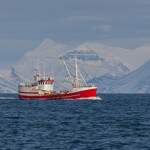Ignore the construction – Seattle still a fishing town
Lately, headlines about Seattle’s booming economy are dominated by record-setting numbers of cranes, nation-leading spikes in home prices, and astronomical tech salaries. Old Seattle – the one that wears Extra-Tuffs – sometimes seems like it has disappeared behind the gleaming new Amazon towers.
But from harvesting to processing to marketing, Puget Sound is still enjoying a robust slab of revenue and employment from seafood, mostly from activities related to Alaska’s massive catch, worth around USD 6 billion (EUR 5.7 billion) annually.
According to a report by the McDowell Group, an Alaska-based research and consulting firm, processors generated a first wholesale value of USD 4.2 billion (EUR 4 billion) worth of Alaskan seafood in 2014, and the majority of that went through large Seattle-based companies like Trident, Icicle and American Seafoods.
“The first wholesale value of Alaska seafood that is comprised of Washington-based processors was 82 percent in 2014. So for Washington-based processors, that works out to USD 3.46 billion (EUR 3.28),” said Andy Wink, the McDowell Group’s senior seafood analyst.
Mark Gleason, the director of the Washington Maritime Federation, said there are many ways Alaska seafood money filters back into Seattle economy, including wages.
“Trident, Icicle, Ocean Beauty – all the major processors have offices right here and they provide significant benefits. And their processing facilities might be in Alaska, but they hire a lot of people from around here who bring their wages back,” said Gleason, a former fisherman.
Spencer Cohen, a senior economist for the consulting firm Community Attributes, added that the seafood-related job market is growing at an even faster rate than other sectors in booming Seattle.
“In 2012, there were about 14,100 jobs tied to commercial fishing and seafood processing statewide, and 2015 was 15,900. That’s about 4.1 percent per year. By comparison, job growth in Seattle metropolitan area over that same period is probably in the range of 2.5 percent,” said Cohen, the project manager for a new report for the Washington Maritime Federation.
Seattle’s relationship with Alaska seafood is exemplified by the Port of Seattle, home to the North Pacific Fishing fleet, 414 boats over 58 feet long that call Seattle home but fish Alaskan waters.
“The North Pacific fleet makes up the bulk of the contribution seafood industry in Washington State, from a pure numbers perspective,” said Chad See, who runs the Freezer Longline Coalition (FLC), a Pacific cod fisheries’ alliance.
Eight out of the 12 FLC members are centered in the Puget Sound region – four of those, including Blue North Fisheries and Clipper Seafoods, have headquarters in Seattle – and See estimates that around half of the USD 200 million (EUR 190 million) in annual revenues from the fishery end up in Washington’s economy.
See added that North Pacific pollock, Alaska’s largest fishery at about 38 percent of the annual catch, also feeds Washington’s economy.
“The pollock trawl and flatfish trawl fleets are predominately Washington State-based companies, so the revenues largely come back to the state. They are even more based here in Washington than we are,” he said.
Counting smaller boats like seiners and gill-netters that winter at the Port’s Fisherman’s Terminal, a report prepared by the Martin Associates tallied 520 fishing boats, pumping an estimated USD 224.8 million (EUR 213 million) back into local businesses.
“There is nowhere in the country that provides the suite of services that Seattle provides,” Gleason said, pointing to the area’s shipwrights, engine shops, brokers, marine supply stores and other services.
Gleason and others see a strong chance for growth in modernization of the aging North Pacific Fleet that could run to USD 1.6 billion (EUR 1.5 billion), with shipyards boosting production to four ships over the next 10 years, well over the yearly average of one ship for the past 15 years. Not all of that industry will stay Puget Sound, but if the region can attract 50 percent of the modernization bids, it will create up to 750 jobs at USD 60 million (EUR 57 million) annually.
“On a state level, there’s an effort to provide incentives for shipyards to be able to provide lower prices to build new vessels, to be more competitive nationally, by providing them with tax incentives,” See said.
And while fishing industry people are hesitant when it comes time to making predictions, most repeat of refrain of confidence in the management of North Pacific fisheries.
“We have very strong underlying management. We have very strong science. Because we have all these protections in place, if we don’t have the data, we have to ratchet back the harvest to be conservative. You have a lot of great career scientists within NOAA and within NFMS and so I’m confident in the underlying management and the science that we can feed into that management,” Gleason said.
Because allocations are closely regulated, much of the future growth in the industry will go hand-in-hand with fleet modernization.
“There’s an effort by our fleet and other catcher/processor fleets to be able to utilize the product more. Because of our management, we’re not going to catch any more fish, but you want to get more value out of the fish we can catch,” See said.
Meanwhile, Washington State fisheries contribute to regional economy, offloading 153.6 million pounds of seafood at Washington ports in 2015, compared to Alaska’s 6 billion pounds. The four major Washington coastal ports – Westport, Ilwaco, Chinook and Willapa – provide an estimated 1,100 direct commercial fishing jobs.






Share